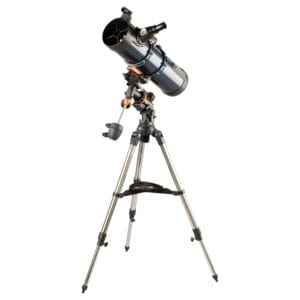Imagine: it’s a cold night in 1609. Galileo Galilei points a small, handmade telescope at the sky and sees something no one has ever seen before – the moons of Jupiter. That moment changed the way we look at the cosmos forever.
The history of telescopes is a story of curiosity, innovation, and an unstoppable desire to understand the universe. In this blog post, we’ll take you on a journey through time, from early lenses to today’s advanced AI-driven telescopes.
The Early Beginning: Simple Lenses and Great Discoveries
The journey began in 1608 when Dutch spectacle maker Hans Lippershey filed the first patent for a telescope. His invention, a simple tube with lenses, was initially intended to bring distant objects closer – an ideal tool for sailors and soldiers.
But it soon became clear that this technology went far beyond earthly applications. Galileo Galilei, inspired by Lippershey, refined the design and pointed his telescope at the sky. He not only discovered Jupiter’s four largest moons but also mountains and craters on the Moon, and confirmed that Venus has phases like our Moon. Galileo’s telescope marked the beginning of what we now call modern astronomy.
Reflectors: Newton’s Mirrors
In 1668, Isaac Newton introduced a groundbreaking innovation: the reflecting telescope. Instead of lenses, he used mirrors to collect and focus light. This design reduced chromatic aberration (color distortions) and provided sharper images. Newton’s reflecting telescope laid the foundation for many of the telescopes we use today.
Giant Telescopes and Space Missions
In the 20th century, we began building telescopes larger and more powerful than ever before. The Mount Wilson telescope in California gave us the first evidence that the universe is expanding. Later, the Hubble Space Telescope, launched in 1990, brought breathtaking images of distant galaxies and nebulae – images that put our place in the universe into perspective.
The Digital Age: Smart Telescopes for Everyone
Today, telescopes are smarter than ever. AI-driven telescopes, such as the Hestia, Finder TW2, and StellarVision, have made stargazing accessible to everyone. These models can automatically find objects, take photos, and analyze data. Even from light-polluted cities, smart technology still allows you to enjoy the wonders of the universe.
Take for example the Vespera II and Vespera Pro: compact telescopes specifically designed for astrophotography. With features like stacking and real-time image enhancement, you can take beautiful shots of galaxies, even as a beginner. This only increases the fascination with stargazing.
A Look at the Future
What does the future hold for telescopes? New technologies, such as adaptive optics and improved AI algorithms, will likely make stargazing even more accessible. Perhaps we’ll even launch space telescopes in the near future that can look even deeper into the universe.
Conclusion: a Never-ending Journey
The history of telescopes shows how far our curiosity can take us. From Galileo’s handmade lens to today’s advanced smart telescopes – the universe continues to inspire us.
Want to be part of this history? Check out our webshop for telescopes like the Finder TW2 or the Hestia and start your own journey of discovery through the starry sky.







